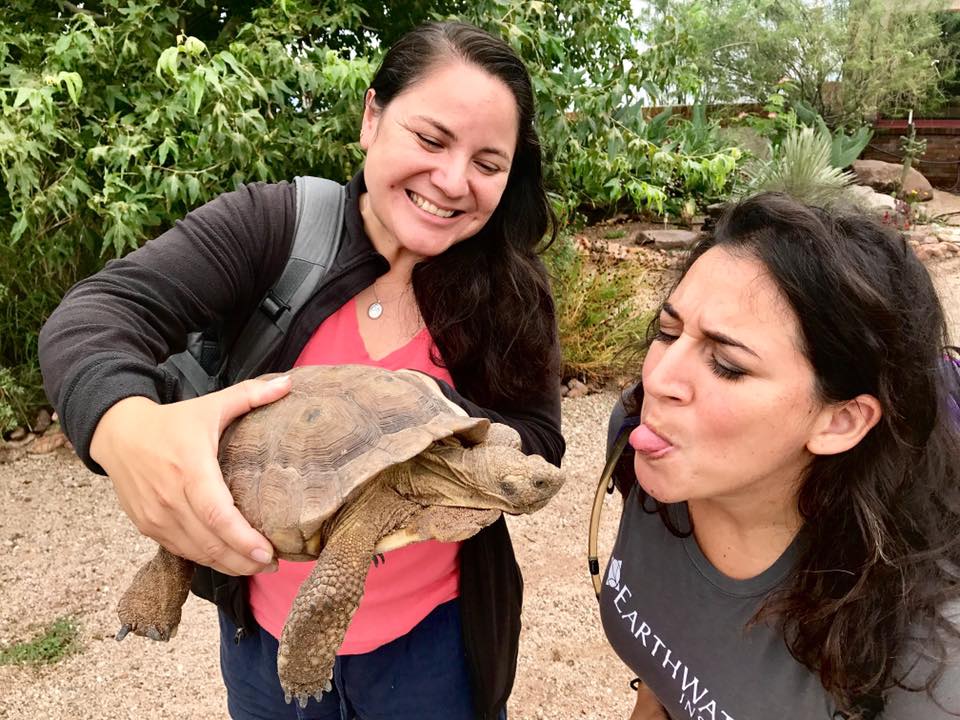Photo: Betsy Rivera and Jessica Diaz hanging out with newly made friends!
It was an active summer for Jessica Diaz and I. We were a part of EarthWatch Institute’s Teach Earth Expedition which allows educators to conduct field research with scientists to tackle critical environmental challenges around the globe—from climate change to ocean health, human-wildlife conflict, and more.
Jessica and I joined six other EarthWatch volunteers to gather research for the “Climate Change and Caterpillars” project which is conducted throughout the year in various locations around the world. The research team was led by Dr. Lee Dyer of the University of Reno along with Dr. David L. Wagner of the University of Connecticut. Their field work in Arizona consisted of hunting for caterpillars, collecting plants and helping with the caterpillar “zoo” to learn about the relationships between caterpillars, their natural enemies called parasitoids and plants. The data collected will help scientists understand how global climate change may be affecting the interactions between those three organisms and the overall experience allows us to go back to our classrooms with skills to implement environmental projects that are valuable in our local communities.
“Earthwatch helped build my confidence as a science teacher. I was reminded that I know how to conduct research and relate it to global environmental issues. Interaction diversity research is something my students will be doing throughout this school year.” – Jessica Diaz
Research has shown that warmer temperatures speed up the life cycle of caterpillars and moths. Jessica shared, “Caterpillars and moths provide economic services – they are pollinators and they keep invasive species from spreading. Climate change affects them (and all insects) because it speeds up their life cycle, which means there will be a greater chance they will become pests.” Caterpillars and parasitoids live in a delicate life cycle balance and when this is out of sync, the parasitoids die off. With fewer parasitoids to keep them in check, caterpillars breed like crazy and decimate their food plants.
We measured plots, collected and cataloged caterpillars, and managed the “caterpillar zoo” by feeding them and cleaning their containers.

Photo: Betsy Rivera takes a closer look at a caterpillar and Jessica Diaz tags a tree for tree cover/leaf count estimates.
“I had no idea I would become such a caterpillar know-it-all! I can now collect caterpillars, help to rear them, and even tell you about some defining characteristics. I counted leaves on identified trees and learned how to use a drone to calibrate our leaf counts. I feel like I really contributed towards valid scientific research.” – Betsy Rivera, ECHS Green Ambassadors Teacher
For Jessica, her experience with Earthwatch helped her build confidence and affirm her strengths as a science teacher. “I was reminded that I know how to conduct research and relate it to global environmental issues. It’s already in my plans as interaction diversity research is something my students will be doing this school year.”
A special thank you to Sony Pictures Entertainment and EarthWatch for this invaluable educational opportunity for our teachers!
Read more about our experiences on the EarthWatch blog!
Written by Betsy Rivera, ECHS Green Ambassador Teacher







